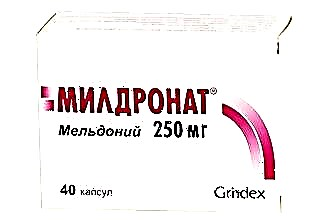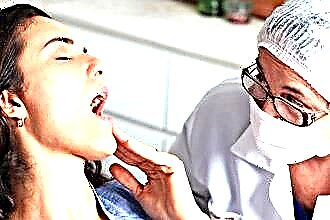Modern inhalers (nebulizers) are special electrical devices that can be used to carry out procedures aimed at treating both the upper and lower respiratory tract. Having appeared on the modern market relatively recently, nebulizers have proven themselves well in the treatment of diseases of ENT organs and bronchitis of various nature. The principle of operation of such an inhaler is to convert the drug into an aerosol by means of ultrasound or a compressor. After that, the smallest particles of the drug are sprayed, and due to their size they quickly reach the goal, influencing not only the nasal mucosa, but also getting into the most distant parts of the bronchi and nasal passages.
The effectiveness of inhalation in the treatment of the common cold
 Using a nebulizer for colds gives you a more effective and reliable treatment than traditional drops and sprays. The fact is that such treatment allows you to thin and remove accumulated mucus from the nose, and make breathing easier. As a result of such treatment, the nasal passages are cleansed, the ciliated epithelium normalizes, which contributes to a speedy recovery.
Using a nebulizer for colds gives you a more effective and reliable treatment than traditional drops and sprays. The fact is that such treatment allows you to thin and remove accumulated mucus from the nose, and make breathing easier. As a result of such treatment, the nasal passages are cleansed, the ciliated epithelium normalizes, which contributes to a speedy recovery.
Despite its high efficiency, regular inhalation with a nebulizer for a cold is not a means of quick relief, so you should not expect a quick effect from them.
Benefits of using an inhaler
What are the advantages of inhalation over other means, and does a nebulizer help with a cold? The main advantage of this method of treatment for nasal congestion is that inhalation allows the delivery of drugs to each part of the respiratory tract, due to which there is a significant increase in the therapeutic effect in comparison with sprays or drops.
Another reason to use a cold nebulizer is its versatility. After all, such inhalations are used in complex treatment for
- acute respiratory viral infections;
- allergic rhinitis;
- runny nose caused by bacteria;
- vasomotor rhinitis;
- as well as for the prevention of infections of various origins.
Important! A contraindication to the use of a nebulizer is an increased body temperature.
Treatment of a cold with a nebulizer is much more effective and safer than procedures using conventional steam inhalation using hot steam.
Nebulizer selection
Today, there are two main types of nebulizers:
- compressor rooms in which drugs are sprayed under the action of an air stream;
- ultrasonic, where the spraying of the drug occurs due to ultrasonic vibration.
 Each of the devices for the implementation of inhalation has its own characteristics, but both effectively cope with the main task. If we are talking about a lingering rhinitis, then it is better to use ultrasonic nebulizers. The main thing is to choose the right medications. One of the advantages of ultrasonic devices is noiselessness, which allows them to be used for small children even while sleeping.
Each of the devices for the implementation of inhalation has its own characteristics, but both effectively cope with the main task. If we are talking about a lingering rhinitis, then it is better to use ultrasonic nebulizers. The main thing is to choose the right medications. One of the advantages of ultrasonic devices is noiselessness, which allows them to be used for small children even while sleeping.
As for compressor nebulizers, such devices are the most practical. This type of inhaler breaks down the drug into tiny particles that penetrate deep into the respiratory tract. The only drawback of compressor inhalers is the high noise level and the ability to use exclusively finished medicines.
The main parameter that you need to pay attention to when buying any nebulizer is the size of the resulting particles.
The particle diameter should be on the order of 2-5 microns. It is also important to pay attention to the gas speed indicators, these values should be in the range of 6-10 liters per minute.
Application features
If you decide to use an inhaler to treat a cold in children, it is recommended to use compressor devices. Such devices provide a stream of micronized drug particles. Compressor inhalers are equipped with a special mask that allows the aerosol to enter the respiratory tract without being sprayed into the air.
Before you start treating a cold with a nebulizer, you need to familiarize yourself with the basic rules and features of this procedure.
- The drug is poured into a special chamber.
- No food should be taken one hour before the procedure and for half an hour after it.
- The inhaler can only be turned on after the medication has been added.
- To achieve a therapeutic effect, the duration of the procedure should be at least 10 minutes.
Important! Remember that the type of drug, its dosage and duration of treatment are determined solely by the doctor.
What medicinal substances are used in nebulizers?
Can a runny nose be treated with a nebulizer? Of course. Since this type of inhalation not only allows you to deliver the drug to the most distant parts of the nasal cavity, but also to fight nasal congestion. Indeed, in compressor inhalers, vasoconstrictors are often used in the composition of solutions.
Along with vasoconstrictor drugs, saline is used to treat the common cold by moisturizing the nasal mucosa. This drug is an effective way to combat the common cold, with virtually no contraindications. Also, inhalations with saline are effective for the prevention of various diseases.
For more severe diseases, for example, sinusitis, antibiotic solutions, anti-inflammatory drugs and other drugs can be used in nebulizers. It is advisable to carry out such procedures after inhalation with a vasoconstrictor drug. Moreover, only a doctor should prescribe medications for sinusitis.
Important! Oil solutions, as well as decoctions or infusions of medicinal herbs, are not suitable for inhalation with a nebulizer.
Oil solutions are not used for inhalation with a nebulizer for the reason that they can get into the lungs and cause a serious complication - oil pneumonia. While herbal infusions and decoctions can damage the device itself, "clogging" it with large particles that remain in the liquid even after thorough filtration.



